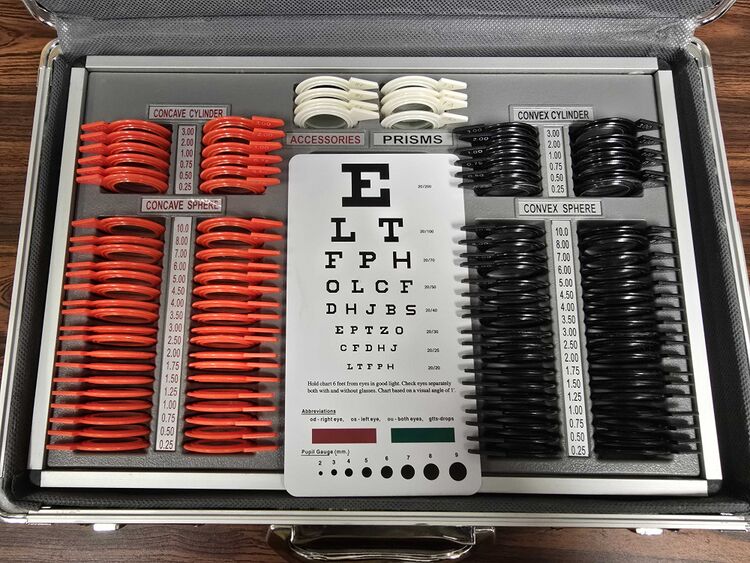Subject Preparation: Corrective Lenses: Difference between revisions
No edit summary |
mNo edit summary |
||
| Line 1: | Line 1: | ||
[[File:OptometryCorrectiveLenses.jpg|MEG Core set of corrective lenses]] |
[[File:OptometryCorrectiveLenses.jpg|center|750px|MEG Core set of corrective lenses]] |
||
Testing subjects who require corrective lenses can be difficult with MEG, obviously because the metal creates artifacts, but also because the shape and size of the MEG helmet does not allow room for glasses to sit comfortably on the participant's face. For this reason, most MRI-safe glasses do not work for MEG. |
|||
Our current solution is a trial set of corrective lenses, like you would find in an optometrist's office. These can be set in a paper frame for the experiment. |
|||
| ⚫ | |||
How to use: |
|||
1. Check if glasses are necessary. In mild cases, the participant may be able to see the screen without any correction. Consider if the visual stimulus is critical to your research question, or if it is only needed to guide the subject through the task (i.e. "Head localization now" for an auditory or task). If those conditions are met, you may proceed without lenses. |
|||
2. Select the correct lenses: |
|||
--> If you have your participant's prescription, you may prepare the glasses ahead of their arrival: |
|||
| ⚫ | |||
--> If you don't have their prescription, ask for their best guess. Using the included eyechart, assess the participant's vision with different increments of lenses. |
|||
Caveats: |
|||
The paper frames can mold around the participant's face when they are raised in the MEG helmet. This can affect the focal point. |
|||
Latest revision as of 07:50, 6 June 2025

Testing subjects who require corrective lenses can be difficult with MEG, obviously because the metal creates artifacts, but also because the shape and size of the MEG helmet does not allow room for glasses to sit comfortably on the participant's face. For this reason, most MRI-safe glasses do not work for MEG.
Our current solution is a trial set of corrective lenses, like you would find in an optometrist's office. These can be set in a paper frame for the experiment.
How to use:
1. Check if glasses are necessary. In mild cases, the participant may be able to see the screen without any correction. Consider if the visual stimulus is critical to your research question, or if it is only needed to guide the subject through the task (i.e. "Head localization now" for an auditory or task). If those conditions are met, you may proceed without lenses.
2. Select the correct lenses:
--> If you have your participant's prescription, you may prepare the glasses ahead of their arrival:
Explanation of glasses/corrective lens prescription: For Little Eyes **This webpage redirects you away from the NIMH MEG Core site.
--> If you don't have their prescription, ask for their best guess. Using the included eyechart, assess the participant's vision with different increments of lenses.
Caveats: The paper frames can mold around the participant's face when they are raised in the MEG helmet. This can affect the focal point.